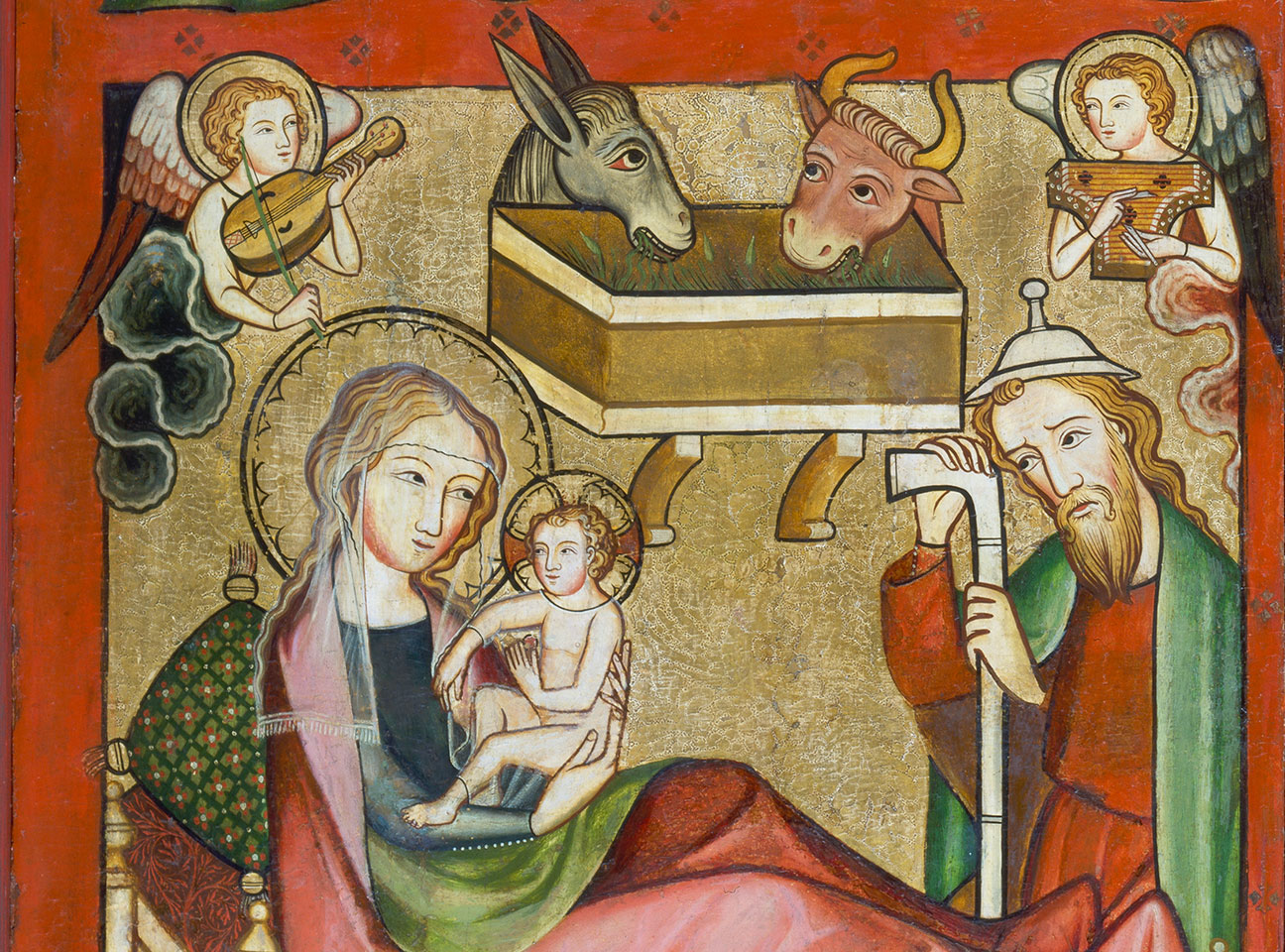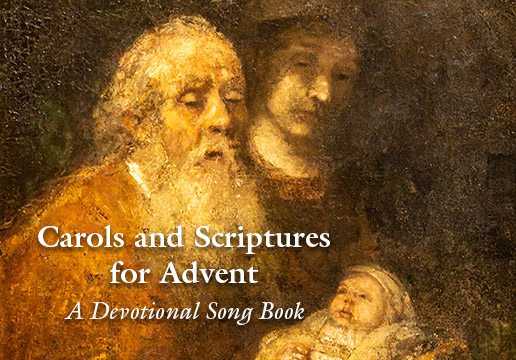
DECEMBER 25
View the Full Advent Calendar
Who is He in Yonder Stall?
![]()
Who is He in yonder stall,
At whose feet the shepherds fall?
Who is He in deep distress,
Fasting in the wilderness?
Chorus:
’Tis the Lord, O wondrous story!
’Tis the Lord, the King of glory!
At His feet we humbly fall,
Crown Him, crown Him Lord of all!
![]()
Who is He the people bless
For His words of gentleness?
Who is He to whom they bring
All the sick and sorrowing?
![]()
Lo! at midnight, who is He
Prays in dark Gethsemane?
Who is He on yonder tree
Dies in grief and agony?
![]()
Who is He that from the grave
Comes to heal and help and save?
Who is He that from His throne
Rules through all the world alone?
Artwork:
Nativity by Rhenish Master, (1330) is the altarpiece of Altenberg. Frankfurt Städelmuseum. This is one of 4 Shutters of an altarpiece that belonged to the cloister of Altenberg near Wetzlar, Germany. This particular panel depicts the Nativity scene with Mary holding the infant Jesus and Joseph looking upon the scene compassionately. The elegant two-dimensionality of the robed figures is typical of the early fourteenth-century High Gothic style.
Carol Text: Benjamin Hanby, 1866
Carol Melody: Benjamin Hanby,
Piano accompaniment by Lezlie Taguding
“Lift up your heads, you gates; lift them up, you ancient doors, that the King of glory may come in. Who is he, this King of glory? The Lord Almighty—he is the King of glory.”
- Psalm 24:9-10
Advent Devotional
Composed by Benjamin Russell Hanby, this carol was published in 1866. In addition to composing music, Hanby was a pastor and abolitionist whose home was a stop on the famous Underground Railroad prior to the Civil War. He died of tuberculosis at the young age of 33.
This carol begins in the stall and then traces the full trajectory of the life of Jesus, culminating with his Lordship over the world after being raised from the dead. The very first line of this carol asks, “Who is He in yonder stall?” It seems diametrically opposed to the scripture reading accompanying this carol as Psalm 24 points to the image of Jesus being a King, specifically the King of glory. His inauspicious birth after Joseph and Mary, who was advancing in her pregnancy, traveled one hundred miles from Nazareth to comply with the Caesar Augustus’ census decree did not portend royalty or kingship.
The influx of people in Bethlehem for the census meant there was no room for them at the inn. On Christmas Day, when we consider “Who is He in Yonder Stall?”, it seems critical to remember that Jesus inverts the worldly view of what a king is. The King of Glory’s first earthly throne was then a manger, better known as an animal’s feeding trough. One cannot help thinking of other “Kingly” references during Jesus’s earthly life. As he stood before Pilate, Pilate asked him, “So you are a king?” And toward the end of his earthly life, Jesus was crucified with the inscription “King of the Jews” hanging over his head.
Prayer
King of Glory,
come and make Your dwelling here.
Come in to save, to
help, to heal. I open wide my heart,
and before You now I kneel. May
You reign in me.

Joseph A. Kohm
Vice President for Development, CSLI & CSLI City Director, Virginia BeachJoseph A. Kohm, C.S. Lewis Institute Vice President for Development and City Director for Virginia Beach. Joe is an attorney and formerly worked as a Certified Major League Baseball Player Agent. He earned his Master’s in Management Science from the State University of New York at Oswego and both his J.D. and M.Div. from Regent University. Joe is the author of The Unknown Garden of Another’s Heart: The Surprising Friendship between C.S. Lewis and Arthur Greeves (Wipf and Stock, 2022.)




